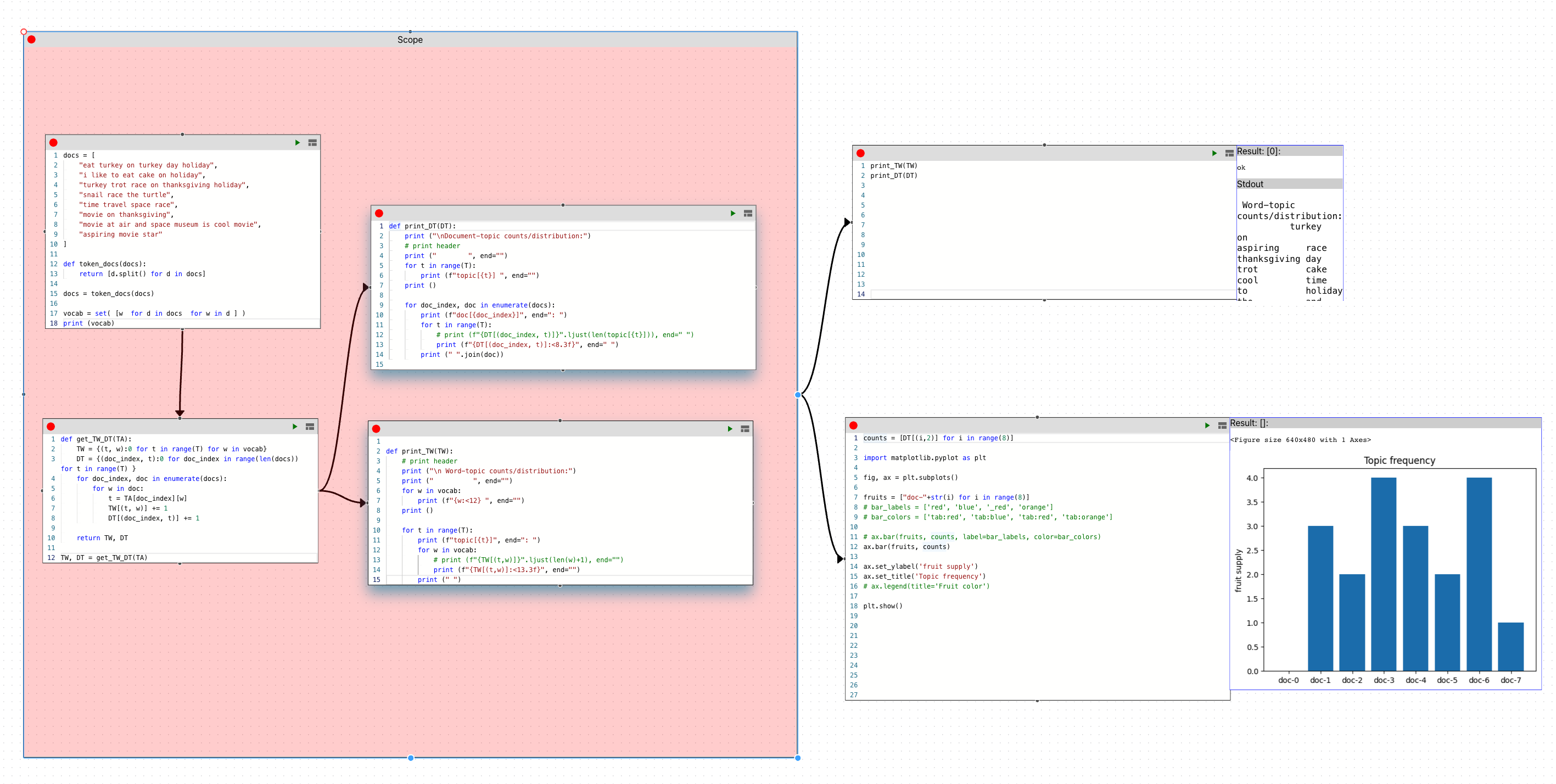Codepod provides the interactive coding experience popularized by Jupyter, but with scalability and production-readiness. Users can still incrementally build up code by trying out a small code snippet each time. But they would not be overwhelmed by the great number of code snippets as the projects grow. Try it online at https://codepod.io !
And we are actively polishing everything. You might want to take a look at the known issues along your adventure with Codepod.
CodePod is open source under MIT license. Feel free to contribute! We can make it better together. You can contribute by opening an issue, discussion, or submit a pull request. Please use Prettier (e.g., its VSCode plugin) to format your code before checking in.
The docker compose files are in compose/dev folder. The dev stack mounts the
src folder, so that you can edit the files on your local computer, and let the
node.js process inside the container do the compiling and hot-reloading.
To install docker-compose, follow this official instruction.
First, create a dev/.env file with the following content (leave as is or change the value to
whatever you want). You probably don't need the GOOGLE_CLIENT_ID is you don't need Google's OAuth.
POSTGRES_USER=myusername
POSTGRES_PASSWORD=mypassword
POSTGRES_DB=mydbname
JWT_SECRET=mysupersecretjwttoken
GOOGLE_CLIENT_ID=<google oauth client id>
Start the stack:
cd dev
docker compose up -d
You need to initialized the database if this is the first time to start the stack. See below.
Wait a few minutes for packages installation and compilation. Once ui and
api containers are ready listening on http ports, go to http://localhost:80
to see the app.
http://localhost:80/graphql: Apollo GraphQL explorer for the backend APIshttp://prisma.127.0.0.1.sslip.io: Prisma Studio for viewing and debugging the database.
If this is your first time running it, the database is empty, and you need to initialize the database. To do that, open a shell into the API container and run:
npx prisma migrate dev
This command is also needed after the database schema is changed. The protocol is:
- One developer changed the schema. He will run
npx prisma migrate dev --name add_a_new_field. This will generate a migration, e.g. this migration. The schema change along with this migration need to be checked in to git. - Another developer pull the change, then run
npx prisma migrate dev(in the api container's shell) to apply the schema change.
Although we develop using docker, we still want auto-complete and linting while
coding. For that to work, you need to install the node packages locally, i.e.,
run yarn in api/, ui/, etc.
